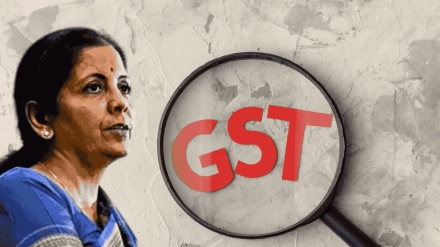India’s tax system just got one of its biggest shake-ups since new GST rates were rolled out on Wednesday. The GST Council cleared a new GST structure that cuts duties on a wide range of items from the toothpaste you use every morning to the car you drive, the medicines you buy, and even bigger expenses like cement and insurance. Household budgets, small businesses, and everyday spending are all set to feel the impact.
But let’s be honest, whenever a new GST announcement is made, it usually comes wrapped in complicated numbers, long lists, and terms that sound more suited to an accountant’s desk than a dinner-table conversation. For the common man, what matters is simple – how much extra (or less) will I end up paying?
This article aims to do exactly that. We take the jargon out of the latest GST reform and put it into plain language you can relate to.
Instead of wading through technical terms like “special rates,” “compensation cess,” or “two-tier structure,” we’ll explain what’s actually changing, who it affects, and why it matters. Think of this as your easy-to-follow guide to one of the biggest tax reforms in years. So let’s dive in.
New GST Two-tier structure
The new GST two-tier structure actually replaces the previous four-tier GST structure, which consisted of four tac slabs, including 5%, 12%, 18%, and 28%. Now these four tax slabs have been replaced with just two-tier slabs which are – 5% and 18%. Apart from this two-tier structure, a special 40% rate applies to select luxury and sin goods.
Compensation Cess
It was introduced to help states make up for the revenue they lost during the initial 5 years of GST implementations. This came under the GST (Compensation to States) Act, 2017. The idea is to guarantee states a fixed income for the first five years of GST (2017–2022), so they would not suffer losses during the shift to the new single tax system.
Special Rate
The special rate is referred to the 40% tax that will apply only to a few selected items, mainly sin goods and some luxury products. Earlier, most of these items attracted compensation cess on top of GST. Now that government has decided to remove the Compensation Cess, its rate has been merged with GST to make sure the overall tax burden on these goods stays the same. For other goods and services that were already taxed at the highest GST slab of 28%, the new special rate has now been applied.
Input Tax Credit
Input Tax Credit (ITC) means the tax a business pays when buying goods or services, can be used to reduce the tax it has to pay when selling its own products or services. In short, the GST you pay on purchases can be adjusted against the GST you collect from customers. Because GST connects every step of buying and selling, the credit moves smoothly across the supply chain.
